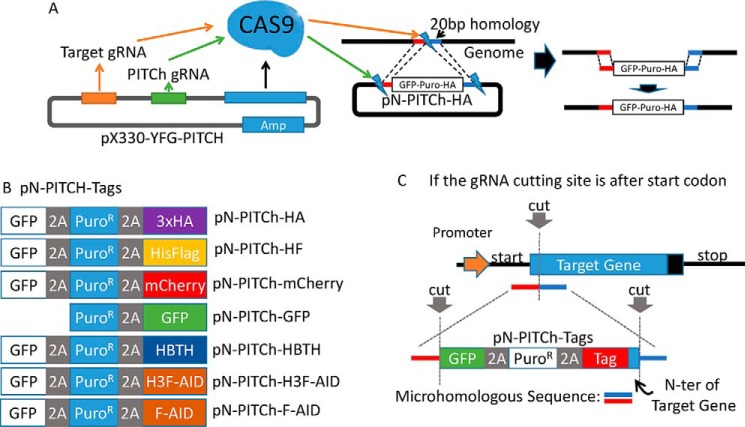Figure 1.
Experimental schematic of MMEJ mediated N-terminal CRISPR knockin tagging. A, experimental schematic of MMEJ-mediated tagging. The PX330 vector expresses Cas9 and two gRNAs, one targeting the genomic locus of choice and the other one targeting the pN-PITCh vector to release the repair fragment containing the tag. The pN-PITCh vector contains GFP, the puromycin resistant marker, and the designated tag, all separated by self-cleaving T2A and P2A peptides. Two 20-bp microhomology regions corresponding to the regions adjoining the Cas9 cleavage site are flanking the insertion cassette. The pN-PITCh and PX330 vectors are co-transfected, and cells are selected with puromycin to identify the desired clones. B, pN-PITCh versions available for various tags. C, schematic for reconstitution of the native N-terminal sequences. For gRNAs that select the Cas9 cut site inside of the ORF, reconstitution is required and is achieved by including the removed 5′ ORF fragment into the pN-PITCh construct during cloning of the microhomology sequences. To prevent Cas9 cleavage of the repair fragment, either the gRNA targeting sequence or the PAM domain should be changed during the repair process.

